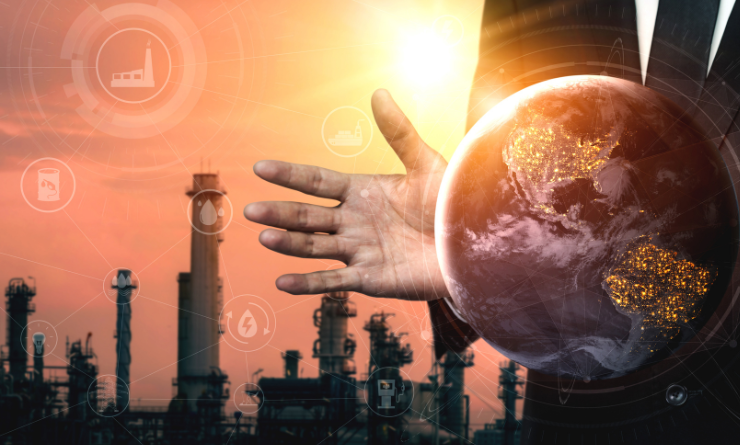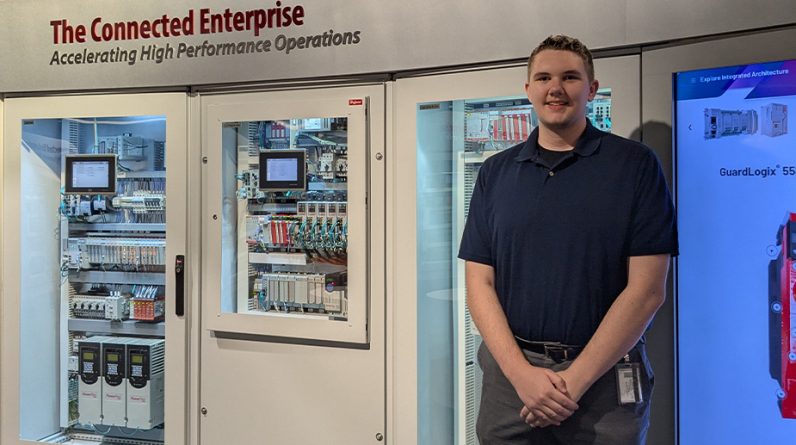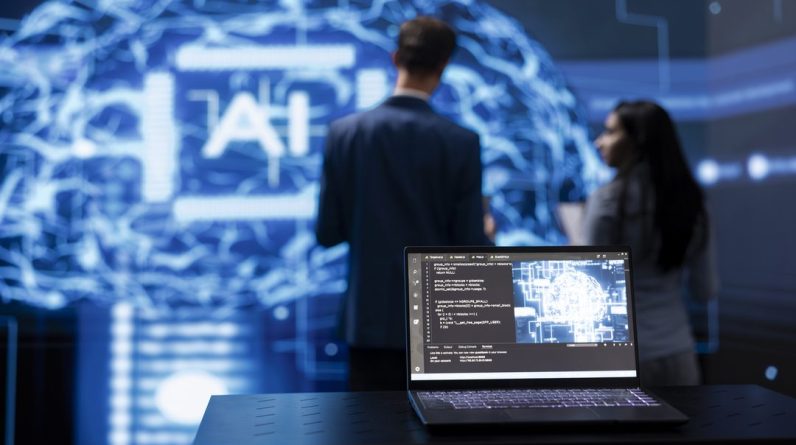
(© Blue Planet Studio – Canva.com)
As we stand on the cusp of 2025, the business world is experiencing a profound shift. Across industries, from manufacturing and construction to energy, telecoms, and defense, the emergence of new technologies is reshaping how we operate, innovate, and sustain our growth. This article delves into the key trends that will define 2025, providing insights into how Industry 5.0, artificial intelligence, and sustainability will converge to create a more efficient, adaptable, and responsible future.
At the heart of these changes is the realization that progress is no longer just about technological advancement. It’s about harmonizing that progress with our commitment to environmental, social, and governance (ESG) principles. Industry 5.0 marks an era of human-machine collaboration that prioritizes sustainability, where AI is not merely a tool but a strategic enabler for transformation. AI is coming of age, not just automating processes but empowering industries to become smarter, more agile, and future-ready.
We must also recognize the urgency of addressing global challenges, from the Silver Tsunami in the workforce to the new space race in decarbonization. The pace of change and nature of these challenges are more multi-faceted than ever. To stay ahead, businesses need to unlock their secret weapon that exists across their organization and supply chain – their data.
As we look ahead to 2025, one thing is clear. Businesses must be proactive, agile, and bold in adopting new technologies and adapting to a world where sustainability is no longer optional but essential. The trends outlined in here are not just predictions — they are a roadmap to thriving in the future. By harnessing the power of AI, digital transformation, and sustainable practices, industries will not only navigate the complexities of tomorrow but shape it to their advantage.
We hope these trends provide valuable insights and serve as a catalyst for leaders ready to embrace the opportunities of 2025 and beyond.
The dawn of Industry 5.0
In 2025, we will witness the rise of Industry 5.0. Industry 5.0 is a transformative evolution of Industry 4.0. Rather than a revolution, Industry 5.0 builds upon existing technologies like IoT and big data while placing a stronger emphasis on human-machine collaboration and sustainability. Far from being a ’lesser shift’, this new industrial era integrates cutting-edge advancements with Environmental, Social, and Governance (ESG) principles, making it a powerful force for positive change.
With AI at its core, Industry 5.0 doesn’t focus solely on efficiency. It aims to harmonize interactions between people, machines, and the environment — crucial for businesses striving to meet ESG standards, which are becoming a non-negotiable requirement across global markets.
The maturation of Industrial AI
Industrial AI is coming of age. By integrating technologies like machine learning and IoT, industrial AI optimizes manufacturing, enhances supply chains, and improves predictive maintenance. This allows industries to operate smarter and more efficiently while minimizing waste and ensuring real-time adaptability.
However, for AI to fulfil its transformative promise, it must deliver real, measurable value — moving beyond the hype to solve core industrial challenges. AI should be part of a comprehensive strategy rather than a standalone solution. The industries that strategically implement AI will thrive, while those that rely on superficial applications risk disillusionment.
Real-time enterprises will win
The companies positioned to thrive in the future are the ones that can adapt to an ever-evolving world. As enterprises look for ways to improve financial performance, innovation and operational efficiency in 2025, they will shift to a real-time business model — relying on trusted real-time data to guide their decision-making. Enterprise-wide decisions are complex by nature and expensive to change after they are implemented but, with a holistic view and operational intelligence, real-time data will be key to efficient, effective decision-making next year.
Sustainability and the investment disconnect
Sustainability continues to be a top priority, but there is a significant disconnect between where investment capital flows and where the greatest environmental impact can be made. For example, despite the heavy focus on electric vehicles (EVs), they account for just 5% of the carbon emissions problem.
AI can help redirect capital towards high-impact areas like manufacturing, logistics, and resource management. With AI’s ability to optimize operations and monitor sustainability throughout the value chain, it is poised to transform these sectors into more efficient and environmentally friendly industries.
Decarbonization – the new space race
By 2025, decarbonization will become a competitive arena akin to the space race. Nations like China are already making significant strides, and regulatory frameworks in Europe are pushing companies to adopt sustainable supply chains. In this global race, the winners will be those who take bold, proactive steps to reduce their environmental footprint.
Workforce transformation – riding the Silver Tsunami
The Silver Tsunami — the impending retirement of Baby Boomers — will hit businesses by 2030. With one in five Americans set to retire, companies must rethink workforce strategies to fill the gap left by experienced employees.
HR professionals and business leaders need to anticipate these changes and adapt, leveraging technologies like AI and robotics to address workforce shortages and combat the brain drain of a retiring workforce, particularly in industries that rely on specialized skills.
Construction trends – industrialization for efficiency
The construction industry has long struggled with productivity, but 2025 presents an opportunity for a digital revolution. By embracing AI, cloud technologies, and off-site construction, the industry can standardize processes and materials, reducing costs and improving efficiency.
As we move towards an industrialized approach, construction can adopt a factory-like model — similar to Lego — where standardized parts are used to build highly complex structures more efficiently and sustainably.
Manufacturing in 2025 – modernization and the circular economy
The manufacturing sector is undergoing rapid modernization, driven by AI and robotics. As companies face talent shortages and pressure to improve sustainability, technologies like re-manufacturing and circular economy practices will become essential.
In 2025, the shift from legacy systems to AI-powered, cloud-based technologies will drive greater efficiencies, allowing manufacturers to meet sustainability goals and remain competitive in a rapidly evolving market.
Powering the future – energy and utilities in 2025
The Energy, Utilities, and Resources (EUR) sector is at a crossroads, facing unprecedented challenges from climate change to technological disruption. AI and automation are playing a pivotal role in this transformation, from modernizing the power grid to balancing load demands in real-time.
Companies in this sector are using predictive maintenance and anomaly detection to optimize operations, reduce downtime, and enhance grid reliability — critical steps in addressing the energy challenges of the future.
Telco – the 5G revolution
In 2025, telcos are grappling with the massive investment needed to roll out 5G while striving to maximize operational efficiency. The shift to cloud technologies and data consolidation will help companies manage their growing infrastructure needs while improving first-fix rates, reducing costs, and minimizing carbon footprints.
At the same time, telcos are becoming content companies with a race to produce, or partner with firms to deliver the best content experience. This comes with its own challenges of managing an infrastructure that requires constant investment and maintenance, customer service at all time levels, pricing pressure from competition, and managing regulation. Technology is both the curse and the cure for telcos.
Aerospace and defense – keeping pace with compliance and cybersecurity
For the aerospace and defense industries, navigating the complex regulatory landscape will be one of the biggest challenges in 2025. With frameworks like CMMC 2.0 on the horizon, ensuring compliance is crucial, especially as cybersecurity threats continue to rise.
AI-powered tools will help defense companies stay ahead of regulatory changes, enhance their security protocols, and maintain operational integrity in an increasingly volatile world.
Conclusion – preparing for 2025
As we move into 2025, industries across the board must adapt to rapid technological advancements, shifting workforce demographics, and mounting pressures to embrace sustainability. Whether through Industry 5.0 as a whole, or specifics such as the application of industrial AI, or the global race for decarbonization, the future belongs to those who are bold enough to innovate and embrace change.
Now is the time to lead from the front, leveraging technology and strategic foresight to stay ahead of the curve in this rapidly evolving landscape.






